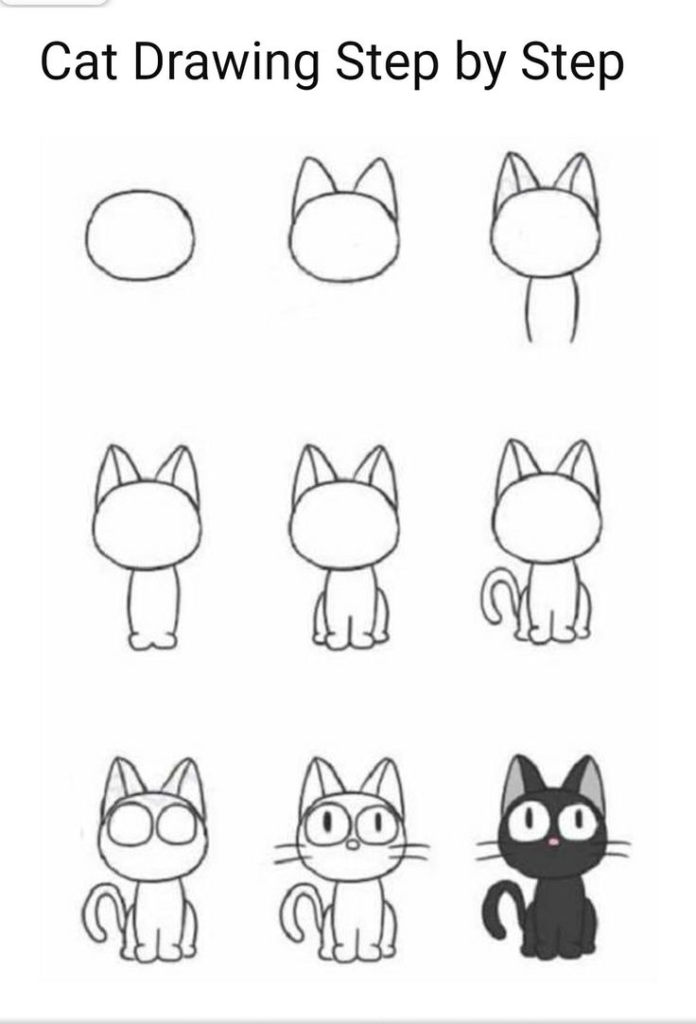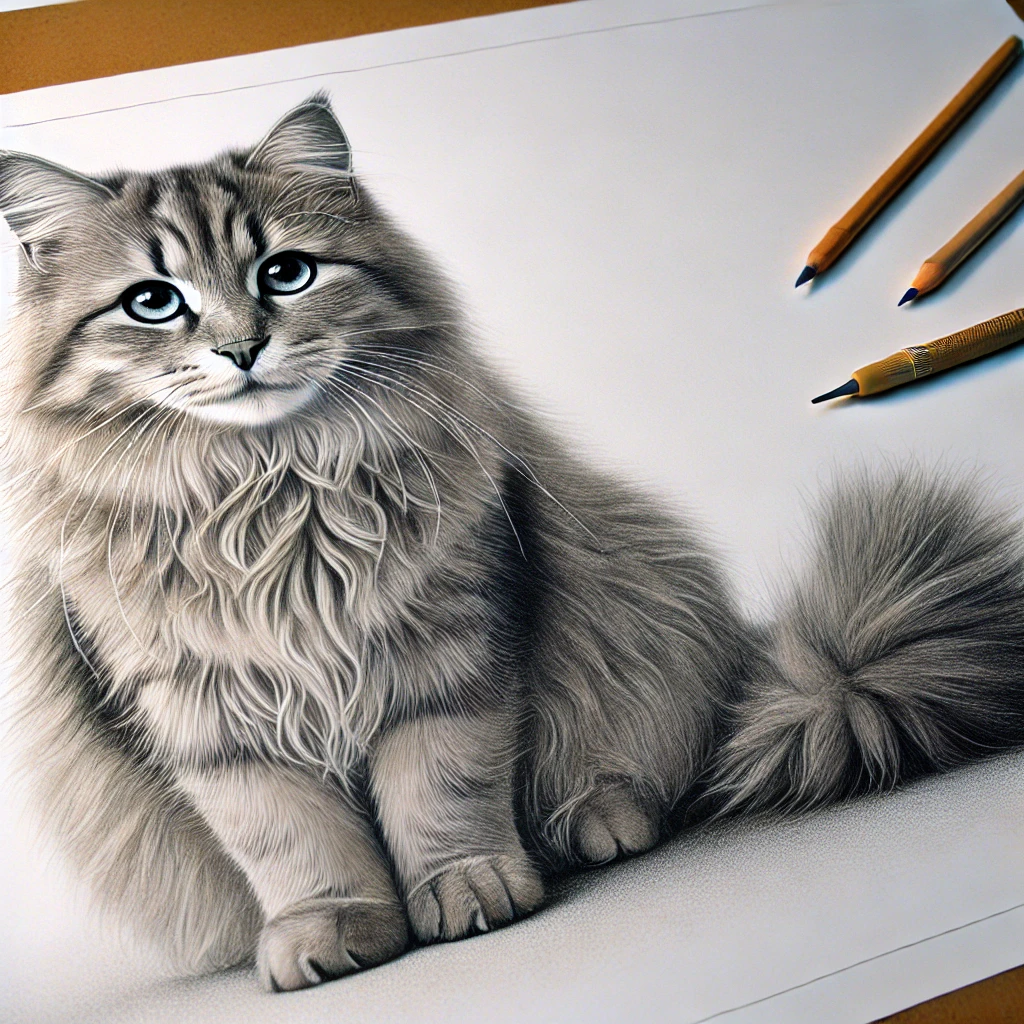Drawing:a4z_-ymtkr8= cat can be a rewarding artistic endeavor, whether you’re a beginner or an experienced artist. These graceful animals, with their sleek forms and expressive faces, offer plenty of artistic inspiration. In this guide, we will cover everything you need to know to draw a cat effectively, from basic shapes to capturing the finer details like fur and whiskers.
Table of Contents
Understanding Cat Anatomy
Before you start drawing, it’s essential to understand the basic anatomy of a cat. Cats have lean, muscular bodies, long tails, and distinct facial features like their almond-shaped eyes and triangular ears. Study photos or live cats to understand their body structure and proportions.
Breaking Down the Cat into Simple Shapes Drawing:a4z_-ymtkr8= cat

Drawing:a4z_-ymtkr8= cat Start with the basics: break down the cat’s body into simple geometric shapes. Use circles and ovals for the head and body, and lines for the tail and limbs. This will act as the foundation of your drawing, helping you get the proportions right before adding details. Drawing:a4z_-ymtkr8= cat
Drawing the Cat’s Head
Drawing:a4z_-ymtkr8= cat The cat’s head can be drawn using a circle for the main part and a smaller oval for the snout. Add triangles for the ears, ensuring they are placed symmetrically. Drawing:a4z_-ymtkr8= cat Place the eyes midway down the head, slightly slanted to give that classic feline look.
Capturing the Cat’s Eyes
Drawing:a4z_-ymtkr8= cat Cats are known for their expressive, wide eyes. Draw the eyes as large ovals with pointed ends. Ensure that the pupils are vertical slits, as this gives the drawing a realistic touch. Adding a shine to the eyes can make them appear more lifelike. Drawing:a4z_-ymtkr8= cat
Shaping the Cat’s Ears
Cats have pointed ears, and capturing their triangular shape is important. Each ear should have a slight curve to them, mimicking the natural shape of a cat’s ears. You can add small tufts of fur at the edges for a more realistic appearance.
Drawing the Cat’s Nose and Mouth

The nose of a cat is small and triangular. Place it at the bottom center of the face. From the nose, draw two lines extending downward to form the mouth. Cats have a soft, ‘M’ shaped mouth, so be careful with how you shape these lines to capture their soft features.
Outlining the Cat’s Body
After constructing the basic shapes, it’s time to outline the body. Follow the shapes closely but smooth out the lines to give the body more fluidity. The body should have a slight curvature, as cats often sit with a relaxed posture. Drawing:a4z_-ymtkr8= cat
Drawing the Cat’s Limbs
Cats have slender limbs with defined muscles. Start by drawing the front legs using two parallel lines from the shoulders to the paws. The back legs are more curved and muscular, particularly around the haunches. Pay attention to the paws—cats have delicate paws with distinguishable toes.
Adding the Cat’s Tail
The tail is one of the defining features of a cat. Depending on the breed and pose, a cat’s tail can be long and slender or fluffy. Use light, flowing lines to draw the tail, giving it movement and grace. Drawing:a4z_-ymtkr8= cat
Adding Texture to the Fur
Drawing:a4z_-ymtkr8= cat Fur texture is what brings a cat drawing to life. Begin by drawing short, fine lines following the contours of the body to create fur. Focus on areas like the neck, belly, and tail where the fur might be longer or thicker. Using different line weights can give your drawing more depth and realism.
Shading Techniques for Depth
Shading is crucial to give your drawing dimension. Lightly shade areas of the cat where shadows naturally fall, like under the chin, the belly, and around the paws. You can also add soft shading around the eyes and nose to highlight the cat’s facial structure.
Capturing the Cat’s Whiskers
Whiskers are an essential feature of cats. Use long, fine lines to draw whiskers extending from the cat’s muzzle. They should fan out naturally and vary in length, adding another level of realism to your drawing.
Refining the Eyes for Expression
A cat’s eyes are one of the most expressive features. Add depth to the eyes by shading around the edges and highlighting the pupils. Make sure to capture the characteristic slitted pupils, adjusting the size depending on the lighting you want to depict.
Drawing Different Poses
Once you’ve mastered the basic structure, experiment with different poses. Cats are known for their flexibility, so try drawing them stretching, jumping, or lounging. Understanding how their body moves will help you create dynamic and lifelike drawings.
Adding Personality to Your Cat Drawing
Every cat has a distinct personality, and your drawing should reflect that. Whether you’re drawing a playful kitten or a regal adult cat, consider the cat’s temperament when choosing its pose, expression, and even fur style.
Drawing Different Breeds
Different cat breeds have varying physical characteristics. For example, Persian cats have rounder faces and fluffier fur, while Siamese cats are sleek with more defined facial features. Study the breed you want to draw to capture its unique qualities accurately.
Using References for Accuracy
If you’re having trouble with proportions or specific details, use references. Photos, videos, or even real-life cats can be extremely helpful in understanding the anatomy and behavior of your subject.
Practicing Gesture Drawing
Gesture drawing is a great way to capture the fluidity and movement of a cat. Spend a few minutes sketching quick poses without focusing on details. This exercise can help you understand how a cat’s body moves and improve your overall drawing skills.
Using Different Art Supplies
Experiment with different tools to enhance your drawing. Pencils, charcoal, and ink all offer different effects when drawing fur and textures. Try using a combination of tools to find the one that works best for your style.
Common Mistakes When Drawing Cats
Avoid common mistakes like drawing overly stiff poses or unrealistic proportions. Cats are graceful animals, and their form should reflect fluidity and movement. Take your time to study how cats naturally sit and move.
Final Touches and Detailing
After you’ve completed the basic drawing, it’s time for the final touches. Go over the lines to refine any rough areas, and add more detailed fur textures, especially around the face and tail. Clean up any smudges and ensure the shading is balanced throughout the drawing.
Conclusion
Drawing cats is both a fun and challenging artistic project. With practice, you’ll improve your ability to capture their unique forms and expressions. By understanding cat anatomy, breaking down their body into basic shapes, and paying attention to details like fur and whiskers, you’ll be able to create realistic and dynamic cat drawings that stand out.
Read: Sacramento Kings Vs GOlden State Warriors Match Player Stats







